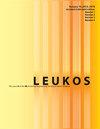连续阴天日光自治(DAo.con):无传感器照明智能控制的新动态度量
IF 2.6
2区 工程技术
Q2 CONSTRUCTION & BUILDING TECHNOLOGY
引用次数: 3
摘要
日光动态指标是根据建筑场景量化电气照明的开关时间或调光的有用工具。这些指标的一个变体也可以用来定义控制照明装置的策略,在不需要外部输入的情况下调暗光通量,从而减少照明系统的能耗。在这种背景下,提出了一种新的方法,连续阴天自治(DAo.con),定义为在连续阴天条件下仅通过日光满足照度阈值时占用时间的百分比,考虑到部分信用线性低于定义的阈值。这个概念作为一种算法,根据测量或模拟的日光因子调整灯具的光通量,考虑用户的需求,忽略任何内部设备主动测量照明条件。日光因子可以根据影响室内自然光的遮阳装置的使用进行修改。因此,该算法可以显著降低照明智能控制的具体成本,促进其在建筑翻新中的推广和实施,而大型窗户的电气照明能耗降低高达76%,中型开口的能耗降低高达65%。结果表明,在使用LED灯具的办公环境中,在天空晴朗的地方,使用该算法可以节省高达7.8 W/m2的能源,而在北纬地区,主要是阴天,则可以节省高达5.7 W/m2的能源。本文章由计算机程序翻译,如有差异,请以英文原文为准。
Continuous Overcast Daylight Autonomy (DAo.con): A New Dynamic Metric for Sensor-Less Lighting Smart Controls
ABSTRACT Daylight dynamic metrics are useful tools for quantifying the switch-on time or the dimming of electric lighting according to the architectural scenario. A variant of these metrics can also be used to define strategies to control the lighting fixtures, dimming the luminous flux with no need for external input and reducing therefore the energy consumption of the lighting systems. Given this context, a new approach is proposed, Continuous Overcast Daylight Autonomy (DAo.con), defined as the percentage of occupied time when an illuminance threshold is met by daylight alone under continuous overcast sky conditions, considering a partial credit linearly to values below the threshold defined. This concept acts as an algorithm which adjusts the luminous flux of the luminaires according to the Daylight Factors measured or simulated, considering user requirements and ignoring any internal device for actively measuring the lighting conditions. The Daylight Factors can be modified according to the use of shading devices that affect to the indoor natural light. Accordingly, this algorithm can significantly reduce the embodied cost of the lighting smart controls, promoting their spread and its implementation in building refurbishment, while the energy consumption in electric lighting is reduced by up to 76% for large windows and by up to 65% for medium-sized openings. The results show that the use of this algorithm in office environments with LED fixtures can promote energy savings of up to 7.8 W/m2 for locations with predominantly clear skies and up to 5.7 W/m2 for northern latitudes with mainly overcast skies.
求助全文
通过发布文献求助,成功后即可免费获取论文全文。
去求助
来源期刊

Leukos
工程技术-光学
CiteScore
7.60
自引率
5.60%
发文量
19
审稿时长
>12 weeks
期刊介绍:
The Illuminating Engineering Society of North America and our publisher Taylor & Francis make every effort to ensure the accuracy of all the information (the "Content") contained in our publications. However, The Illuminating Engineering Society of North America and our publisher Taylor & Francis, our agents, and our licensors make no representations or warranties whatsoever as to the accuracy, completeness, or suitability for any purpose of the Content. Any opinions and views expressed in this publication are the opinions and views of the authors, and are not the views of or endorsed by The Illuminating Engineering Society of North America and our publisher Taylor & Francis. The accuracy of the Content should not be relied upon and should be independently verified with primary sources of information. The Illuminating Engineering Society of North America and our publisher Taylor & Francis shall not be liable for any losses, actions, claims, proceedings, demands, costs, expenses, damages, and other liabilities whatsoever or howsoever caused arising directly or indirectly in connection with, in relation to, or arising out of the use of the Content. Terms & Conditions of access and use can be found at http://www.tandfonline.com/page/terms-and-conditions .
 求助内容:
求助内容: 应助结果提醒方式:
应助结果提醒方式:


